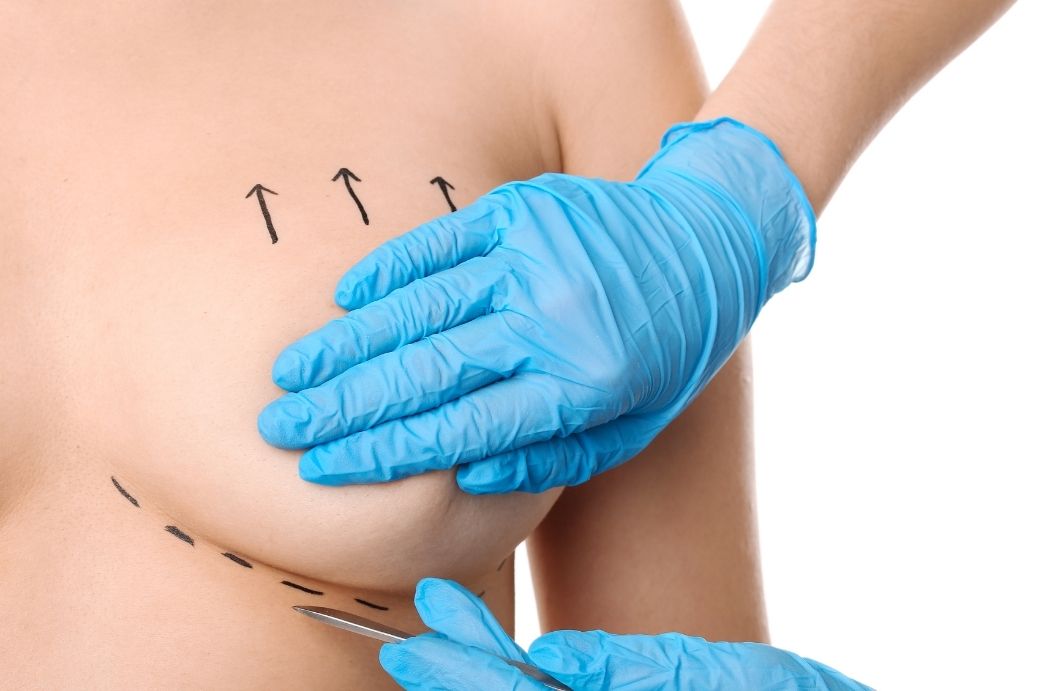Treatments

Table of Contents
Breast augmentation with implants is one of the most popular cosmetic surgeries worldwide, designed to enhance the size, shape, and symmetry of the breasts. This procedure involves inserting silicone or saline breast implants beneath the breast tissue or chest muscles to achieve the desired appearance. Unlike temporary breast enlargement methods, breast augmentation surgery offers long-lasting results and helps women feel more confident in their bodies.
The goal of breast augmentation is not only to increase breast size but also to create natural-looking breast implants that harmonize with the patient’s body proportions. During the initial breast augmentation consultation, the surgeon carefully evaluates the patient’s expectations, anatomy, and lifestyle to recommend the most suitable implant type and surgical approach. Whether the desire is a subtle enhancement or a more dramatic change, breast augmentation with implants provides a customizable solution that addresses both aesthetic goals and personal confidence.
Types of Breast Implants
When considering breast augmentation with implants, one of the most important decisions is choosing the right implant type. Today, there are two main breast implants types: silicone and saline. Each option offers unique advantages, and the choice depends on the patient’s anatomy, lifestyle, and desired results. The ultimate goal is to achieve natural-looking breast implants that enhance confidence while ensuring safety and comfort.
Silicone Implants
Silicone implants are filled with a cohesive silicone gel that closely mimics the feel of natural breast tissue. They are often preferred by patients who want a softer, more realistic appearance. Silicone breast implants are also less prone to visible rippling, making them an excellent choice for women with less natural breast tissue. While they typically require slightly larger incisions, the aesthetic outcome is considered superior in terms of look and touch.
Saline Implants
Saline implants, on the other hand, are filled with sterile saltwater solution. One of their main benefits is that they can be inserted while empty and filled once in place, allowing for smaller incisions. They provide a firmer feel and are generally more affordable than silicone implants. In case of rupture, saline implants are safely absorbed by the body. For patients who prioritize safety and lower cost, saline implants remain a trusted option in breast augmentation surgery.
The Procedure: Step by Step
Undergoing breast augmentation with implants is a carefully structured process designed to ensure both safety and satisfaction. It begins with a detailed breast augmentation consultation, where the surgeon reviews the patient’s medical history, expectations, and body proportions. This stage helps identify whether the individual meets the breast augmentation candidate criteria, such as being in good health, having realistic expectations, and not being pregnant or breastfeeding.
Consultation & Candidate Criteria
During the consultation, patients discuss their desired breast size, shape, and implant type. The surgeon uses this information to recommend the best approach, whether under the muscle or above it, and explains the benefits and risks. This initial step builds the foundation for a personalized surgical plan.
Surgery Process
On the day of surgery, patients are placed under breast augmentation anesthesia, usually general anesthesia, to ensure comfort throughout the procedure. The surgeon makes small incisions in discreet locations, such as under the breast crease, around the areola, or in the armpit. Through these incisions, the implants are carefully positioned to achieve the desired result. Although minimal, breast augmentation scars are a natural outcome of surgery, but they typically fade over time and can be well-hidden. With modern techniques, the procedure is safe, efficient, and tailored to deliver natural-looking results.
Recovery and Aftercare
The breast augmentation recovery period is just as important as the surgery itself, as it directly impacts the final outcome and comfort of the patient. Immediately after the procedure, patients usually spend a few hours under observation before returning home the same day or the following morning. Some mild swelling, tightness, or discomfort is normal in the first week, but this is manageable with prescribed medication and proper rest. Most women are able to return to light activities within a few days, although strenuous exercise should be avoided for at least four to six weeks.
During the first stage of recovery, it is essential to follow all post-operative instructions provided by the surgeon. Wearing a supportive surgical bra, keeping incisions clean, and avoiding heavy lifting are key to preventing complications. Regular check-ups are scheduled to monitor healing progress and ensure implants are settling correctly.
Long-term, patients can expect their breasts to gradually take on a softer and more natural look as swelling subsides. With proper aftercare, the results of breast augmentation surgery are long-lasting, though implants may eventually require replacement or adjustment after 10–15 years. For many women, the recovery phase is a small investment in exchange for the long-term confidence and enhanced body image that breast augmentation with implants provides.
Risks and Complications
Like any surgical procedure, breast augmentation surgery carries potential risks and complications that patients should be aware of before making a decision. While modern techniques and experienced surgeons have greatly minimized these risks, it is still important to understand them clearly.
Common breast augmentation risks and complications include infection, bleeding, changes in nipple sensitivity, and implant rupture. In some cases, capsular contracture may occur, which is when scar tissue forms around the implant and causes the breast to feel firm or distorted. While rare, such complications can require corrective surgery.
Most risks can be reduced significantly by choosing a qualified surgeon, following pre-operative instructions, and adhering to post-surgery aftercare. Patients are also encouraged to attend all follow-up appointments, where their surgeon can monitor healing and detect potential issues early. With proper planning and medical supervision, the majority of women experience safe, successful outcomes and long-term satisfaction with their breast augmentation results.
Costs and Longevity of Implants
The breast augmentation cost can vary widely depending on the country, clinic, surgeon’s experience, and the type of implants used. In the United States and Western Europe, prices are generally higher due to operating costs and healthcare systems, while destinations like Turkey offer more affordable options without compromising on quality or safety. Costs usually include the implants, surgical fees, anesthesia, and follow-up appointments, but patients should always confirm what is covered in their package.
Another important consideration is the longevity of implants. Many patients ask, how long do breast implants last? On average, implants can last between 10 and 15 years, though some may remain intact for much longer. Over time, factors such as aging, weight changes, or personal preference might lead to replacement or revision surgery. With regular check-ups and proper care, implants can provide long-term satisfaction and excellent results, making breast augmentation surgery a reliable investment in both appearance and confidence.
Results and Expectations
The ultimate goal of breast augmentation with implants is to achieve results that look and feel natural while boosting a woman’s confidence. Most patients notice an immediate change after surgery, but the final breast augmentation results become more visible once swelling has subsided and implants have settled into place. This process typically takes a few weeks to a few months, depending on the individual’s healing response.
Many clinics showcase breast augmentation before and after photos to give patients a realistic understanding of what can be achieved. These examples help set expectations and highlight the range of outcomes possible based on implant type, placement, and body proportions.
For women seeking natural-looking breast implants, modern surgical techniques and high-quality implants provide excellent results. The best outcomes occur when patients maintain realistic goals, follow their aftercare instructions, and trust the expertise of their surgeon. With the right planning, breast augmentation offers long-lasting results that harmonize with the patient’s overall appearance.
Why Choose Breast Augmentation in Turkey?
Turkey has become a leading destination for breast augmentation with implants thanks to its combination of experienced, board-certified surgeons, modern hospitals (often JCI-accredited), and transparent, cost-effective packages. Patients typically benefit from shorter wait times, English-speaking care teams, and end-to-end coordination (airport transfers, hotel, aftercare). Clinics commonly use CE/FDA-approved silicone or saline implants, offer clear warranties, and provide structured follow-ups to ensure natural-looking results and safe recovery. If you’re considering breast augmentation in Istanbul, the appeal extends to pairing treatment with a relaxing coastal stay without compromising on safety, implant quality, or surgical outcomes.
FAQs About Breast Augmentation with Implants
Does breast augmentation with implants hurt?
Most patients experience some discomfort in the first few days, but it is usually well managed with prescribed pain medication. The level of pain varies depending on the individual, implant placement, and healing response.
How long does recovery take?
Initial recovery typically takes one to two weeks, during which most women can return to light activities. Full recovery, including the ability to exercise and lift heavy objects, usually takes four to six weeks.
Will there be visible scars?
Yes, but surgeons place incisions in discreet areas such as under the breast crease, around the areola, or in the armpit. Over time, these scars fade and become less noticeable.
Can I breastfeed after breast augmentation?
Many women can still breastfeed after surgery, especially when implants are placed under the muscle. However, it may depend on the surgical technique used, so this should be discussed with the surgeon during consultation.
How often do implants need to be replaced?
While implants are not considered lifetime devices, many last 10–15 years or longer. Replacement may be required due to rupture, shifting, or personal preference for size or shape changes.




